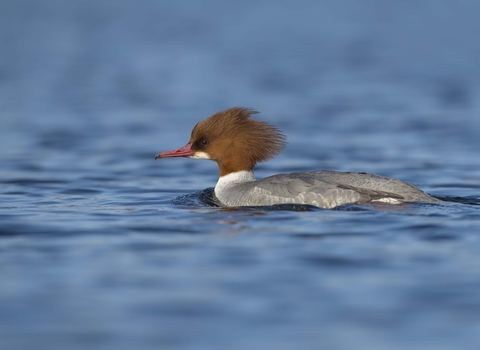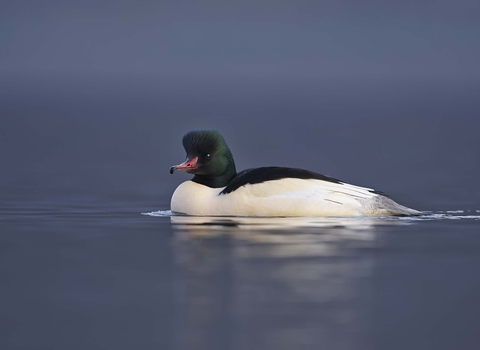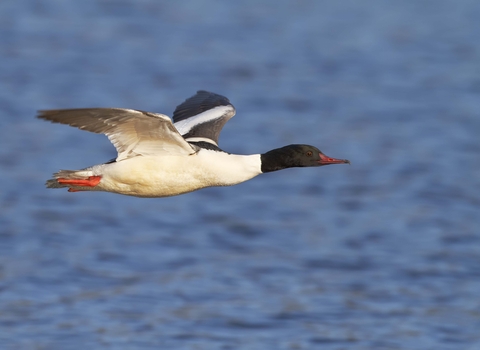
©Richard Steel/2020VISION

©Richard Steel/2020VISION

©Richard Steel/2020VISION
Goosander
The streamlined goosander is a handsome bird and a great fisher - its long, serrated bill helps it to catch and hold its slippery fish prey. It nests in riverbank trees, but can be seen on lakes and reservoirs in winter.
Enw gwyddonol
Mergus merganserPryd i'w gweld
January to DecemberGwybodaeth am rywogaethau
Categori
Ystadegau
Length: 57-69cmWingspan: 90cm
Weight: 1.3-1.7kg
Average lifespan: 7 years
Classified in the UK as Green under the Birds of Conservation Concern 5: the Red List for Birds (2021).
Cynefinoedd
Ynghylch
The goosander is a medium-sized duck and a member of a group called the 'sawbills' because of their long, narrow bills with saw-like 'teeth' which are good for gripping fish. A long, streamlined bird, it is perfectly shaped for swimming after fish. Goosanders are gregarious birds, forming flocks of thousands in some parts of Europe.Sut i'w hadnabod
Male goosanders are white, with dark green heads, black backs and long, red, hooked bills. The white sides and breast sometimes have a pink glow. Females are grey, with a gingery or reddish-brown head and a white throat.Dosbarthiad
Breeds on rivers in the north and west of the UK, and winters on lakes and reservoirs.Roeddech chi yn gwybod?
Goosander nest in holes in trees along the riverbank. They first bred in in the UK in 1871, building up numbers in Scotland and moving south to northern England and Wales. It is now found in the South West too.Gwyliwch
Goosander (https://vimeo.com/444889969)
Goosander by Tom Hibbert
